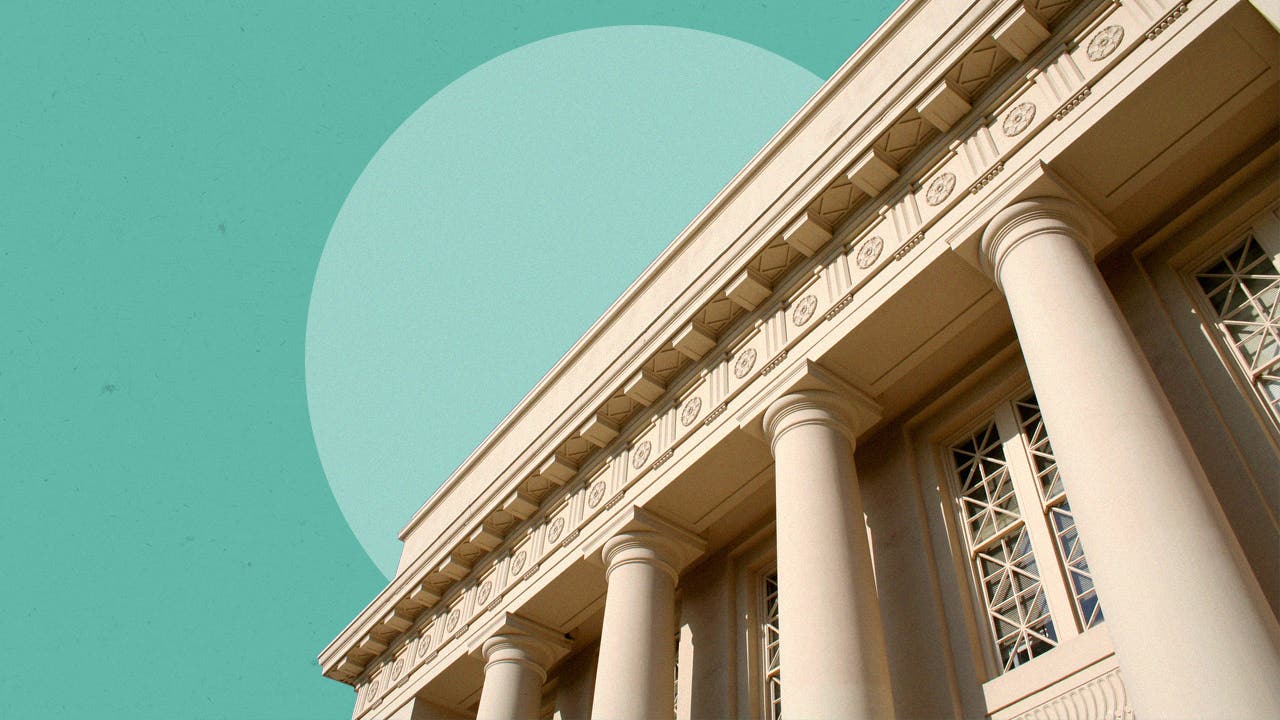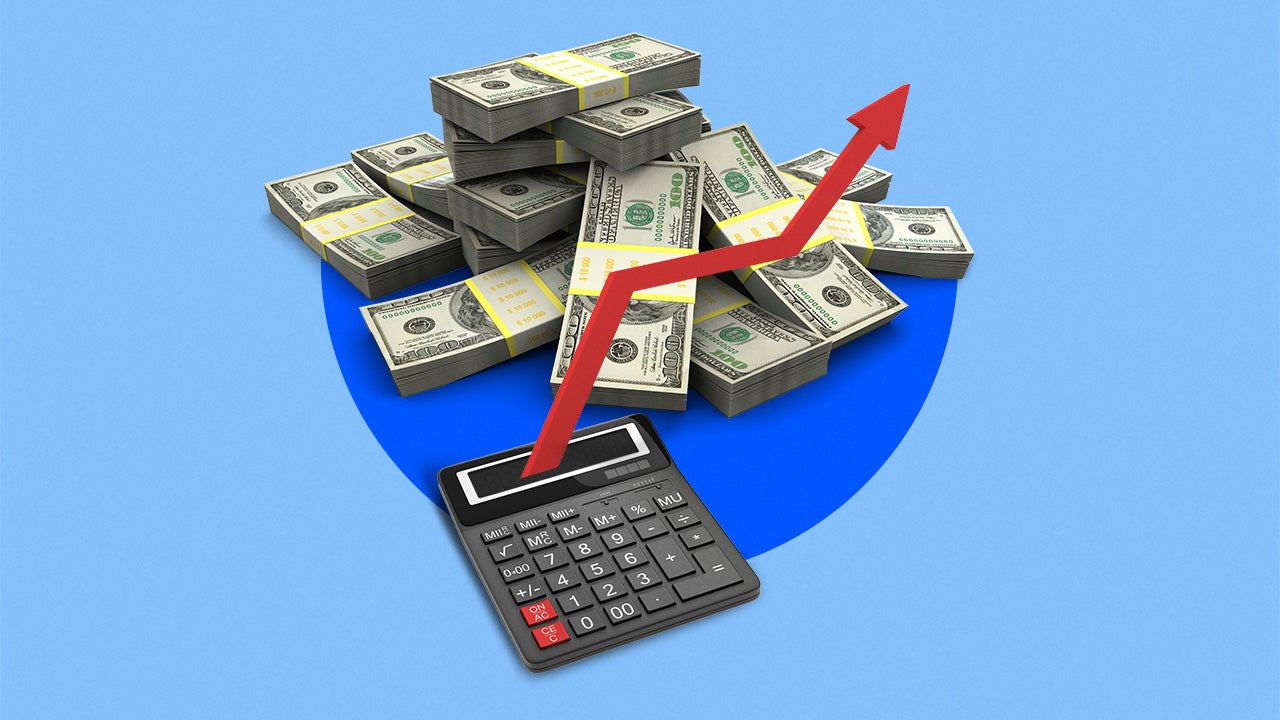The 15 largest banks in the US

The 15 largest banks in the United States hold a combined total of around $14 trillion in assets as of Sept. 30, 2024. Every so often there are changes to this exclusive club of top banks in the U.S. Larger banks trade places with one another and smaller banks drop out, replaced by faster-growing rivals. Mergers and acquisitions also might play a part in this.
A bank failure could cause consolidation of the largest banks in the U.S., like when JPMorgan Chase assumed all of First Republic Bank’s deposits and nearly all of its assets. First Republic was the second-largest bank failure since Washington Mutual in 2008, which JPMorgan Chase also acquired.
Here are the biggest banks in the U.S. by consolidated assets, according to the latest numbers from the Federal Reserve.
| RANK | BANK NAME | TOTAL ASSETS | PREVIOUS RANK |
|---|---|---|---|
| 1 | JPMorgan Chase | $3.58 trillion | 1 |
| 2 | Bank of America | $2.56 trillion | 2 |
| 3 | Citigroup | $1.73 trillion | 4 |
| 4 | Wells Fargo | $1.69 trillion | 3 |
| 5 | U.S. Bancorp | $670 billion | 5 |
| 6 | Goldman Sachs | $564.3 billion | 7 |
| 7 | PNC Financial Services | $559.7 billion | 6 |
| 8 | Truist | $515.2 billion | 8 |
| 9 | Capital One Financial | $483.8 billion | 9 |
| 10 | TD Group US Holdings | $399.8 billion | 10 |
| 11 | Bank of New York Mellon | $348 billion | 11 |
| 12 | State Street | $334.3 billion | 12 |
| 13 | BMO | $264.3 billion | 13 |
| 14 | Morgan Stanley | $224.8 billion | 17 |
| 15 | First Citizens Bank | $220 billion | 14 |
1. JPMorgan Chase
Chase Bank is the consumer banking division of JPMorgan Chase. It currently has more than 4,700 branches and more than 15,000 ATMs. Chase has branches in all of the 48 states in the continental U.S. and has more branches than any other bank in the U.S.
Read Bankrate’s review of Chase Bank.
- Assets: $3.58 trillion
- Headquarters: New York
2. Bank of America
Bank of America serves about 69 million consumers and small business clients worldwide. Like many of the biggest banks, it offers robust digital tools that include a versatile mobile app. In early 2022, Bank of America eliminated its nonsufficient funds (NSF) fee and reduced its overdraft fee, following an industry trend.
Read Bankrate’s review of Bank of America.
- Assets: $2.56 trillion
- Headquarters: Charlotte, North Carolina
3. Citigroup
Citigroup is a global financial services corporation. Its retail banking division has about 659 locations in the U.S. and has a presence in more than 180 countries. U.S. customers can also access more than 65,000 fee-free ATMs.
Read Bankrate’s review of Citibank.
- Assets: $1.73 trillion
- Headquarters: New York
4. Wells Fargo
Wells Fargo was founded in 1852. The bank offers several different checking accounts and saving accounts, including a savings account for children. Certificates of deposit (CDs) are also available.
Read Bankrate’s review of Wells Fargo.
- Assets: $1.69 trillion
- Headquarters: San Francisco
5. U.S. Bancorp
U.S. Bancorp is the bank holding company and parent company of U.S. Bank. What we’ve come to know as the fifth-largest commercial bank by assets began in 1863 as the First National Bank of Cincinnati. Multiple mergers led to the formation of the bank known today for its extensive branch network and investment in improving its digital offerings. U.S Bank has branches in more than half of the 50 states.
Read Bankrate’s review of U.S. Bank.
- Assets: $670 billion
- Headquarters: Minneapolis
6. Goldman Sachs
Goldman Sachs is a global investment banking, management and securities firm. Its clients have access to a variety of financial services, including banking products through Marcus, its online banking arm that made its debut in fall 2016 and began offering personal loans.
Read Bankrate’s review of Marcus by Goldman Sachs.
- Assets: $564.3 billion
- Headquarters: New York
7. PNC Financial Services
PNC was founded as Pittsburgh Trust and Savings Co. in 1845. Today, the bank has around 2,300 locations in 28 states. PNC agreed to acquire BBVA USA for $11.6 billion in November 2020 and the deal closed June 1, 2021.
Read Bankrate’s review of PNC Bank.
- Assets: $559.7 billion
- Headquarters: Pittsburgh
8. Truist Financial
Truist is the bank formed by the merger of BB&T and SunTrust. Truist provides financial services to about 12 million consumer households, as of 2020. BB&T and SunTrust, which were ranked the 11th and 12th largest banks by assets, respectively, as of Sept. 30, 2019, now form a top-10 bank. Those two banks have around 275 years of combined history.
Read Bankrate’s review of Truist Bank.
- Assets: $515.2 billion
- Headquarters: Charlotte, North Carolina
9. Capital One Financial
Capital One is a Fortune 500 company with subsidiaries that include Capital One Bank. In addition to branches on the East Coast, it also has branches in Texas and Louisiana. Capital One bank customers in select cities have access to Capital One Cafés, coffee shops with free Wi-Fi where visitors can open accounts and attend financial workshops. Capital One was named the best big bank as part of the 2025 Bankrate Awards.
Read Bankrate’s review of Capital One and its online banking products.
- Assets: $483.8 billion
- Headquarters: McLean, Virginia
10. TD Group Holdings
TD Bank is the U.S. commercial banking arm of Canada’s TD Bank Group. Customers have access to mortgages, deposit accounts, credit cards and products for commercial and small business clients. The bank has more than 1,100 branches along the East Coast and provides access to around 2,600 ATMs.
Read Bankrate’s review of TD Bank.
- Assets: $399.8 billion
- Headquarters: Cherry Hill, New Jersey
11. Bank of New York Mellon
When the New York Stock Exchange opened in 1792, the Bank of New York was the first company traded. Today, Bank of New York Mellon is an investment company that serves different corporations and institutions as well as individual investors. Private banking services are available for its wealthy clients.
- Assets: $348 billion
- Headquarters: New York
12. State Street
Founded in 1792, State Street Corp. is a financial services and asset management company with about 50,000 employees and a global presence in more than 100 markets. Services include investment research and trading and investment management. Its clients include asset owners, insurance companies and pension funds.
- Assets: $334.30 billion
- Headquarters: Boston
13. BMO
BMO has more than 1,000 branches in the U.S. Some of its branches are in Arizona, Illinois, Florida, Indiana, Kansas, Missouri, Minnesota and Wisconsin.
Read Bankrate’s review of BMO.
- Assets: $264.3 billion
- Headquarters: Chicago
14. Morgan Stanley
Morgan Stanley was founded in 1935. The financial institution operates in more than 40 countries and has over 80,000 employees.
Read Bankrate’s review of Morgan Stanley.
- Assets: $224.8 billion
- Headquarters: New York
15. First Citizens Bank
First Citizens Bank has been around for 120 years. In early 2022, CIT Bank merged with First Citizens Bank.
Read Bankrate’s review of First Citizens Bank for more information.
- Assets: $220 billion
- Headquarters: Raleigh, North Carolina
Bottom Line
The 15 largest banks in the US hold trillions of dollars in assets and constantly undergo changes through mergers, acquisitions and failures. These banks offer a variety of services and have a wide reach through their numerous branches and digital tools. As consumers, it is important to stay informed about the financial landscape and make informed decisions when choosing a bank. Whether it’s for personal or business needs, consider exploring the options offered by these top banks to find the best fit for your financial goals. Stay updated on industry trends and developments, and make sure to regularly review and manage your accounts for optimal financial health.
You may also like

10 reasons small businesses fail (and how to avoid them)

7 of the most famous American investors

Best banks for small businesses in 2024






